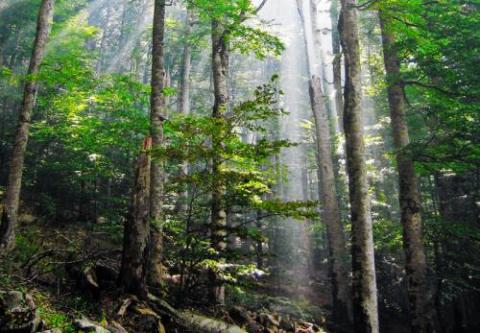
By James Tyrrell
Hygroscopic aerosols — particles in the air that attract water — could be causing forest decline around the world, according to experiments performed in Germany. Researchers believe that aerosol accumulation on trees enables thin bridges of liquid to form between the leaf interior and the leaf surface, causing the plants to dry out much more rapidly.
“In the atmosphere, aerosols act as cloud condensation nuclei,” says Juergen Burkhardt of the University of Bonn, Germany. “Deposited aerosols on leaf surfaces act almost the same way but attract water from inside the plant.”
Plants have developed sophisticated mechanisms for taking up carbon dioxide from the air for photosynthesis without losing too much water but, as the scientists note, it’s a delicate balance. And one that appears to be upset by rising levels of airborne particles.
“Global aerosol concentrations have roughly doubled compared with natural conditions, and the concentration increase over the continents is even higher,” says Burkhardt. “Our results show that aerosols deposited on leaves interfere with this delicate balance, pointing to a direct mechanism by which air pollution can reduce the drought tolerance of plants.”
Burkhardt and colleagues grew three species of tree — Scots pine, silver fir and common oak — for two years in two greenhouses, one ventilated with ambient air and the other fed with air filtered to remove 99% of aerosols. Seedlings grown under filtered conditions had superior drought tolerance to those raised in ambient air, the team found.
Unraveling the exact mechanism by which air pollution decreases drought tolerance has proven difficult because the hygroscopic particles change their form once on the leaf and this has pushed aerosols out of the spotlight until now.

